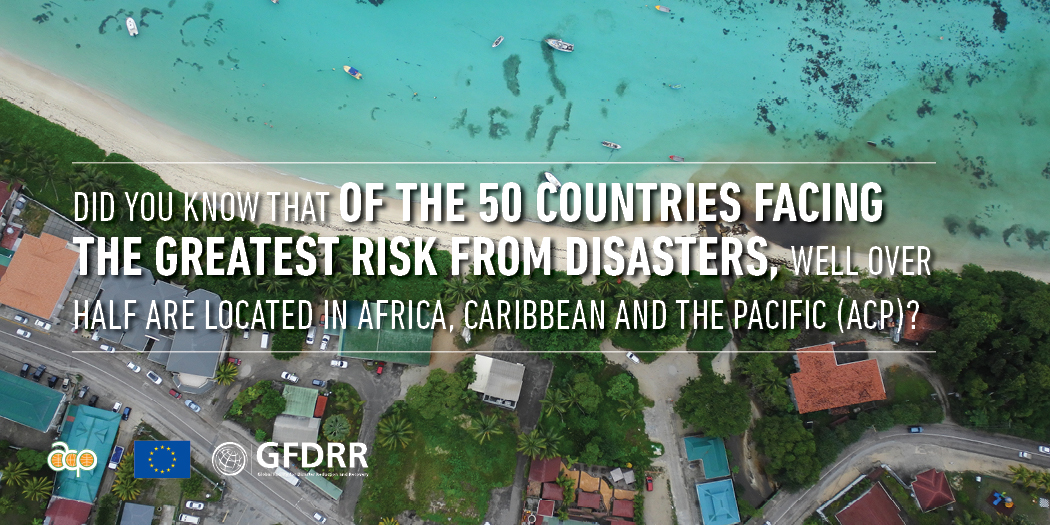
Look below for a selection of publications related to the work of the Africa Caribbean Pacific - European Union Natural Disaster Risk Reduction (ACP-EU NDRR) Program in conjunction with GFDRR and the World Bank, grouped by region.
Jump to another section: ACP-EU Program | Publications | Videos
Publications by Region
Africa
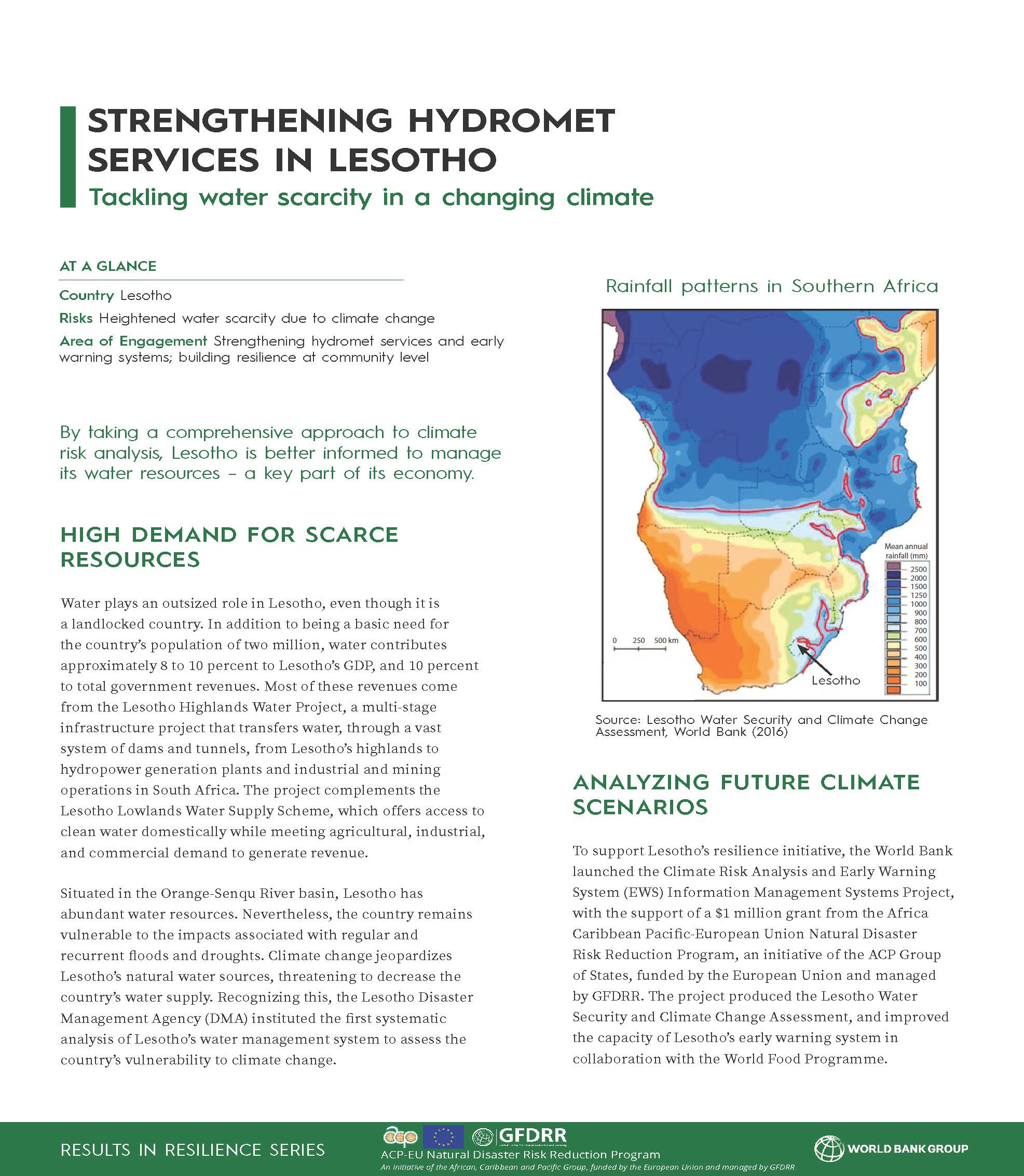 Results: Hydromet services in Lesotho
Results: Hydromet services in LesothoBy taking a comprehensive approach to climate risk analysis, Lesotho is better informed to manage its water resources – a key part of its economy.
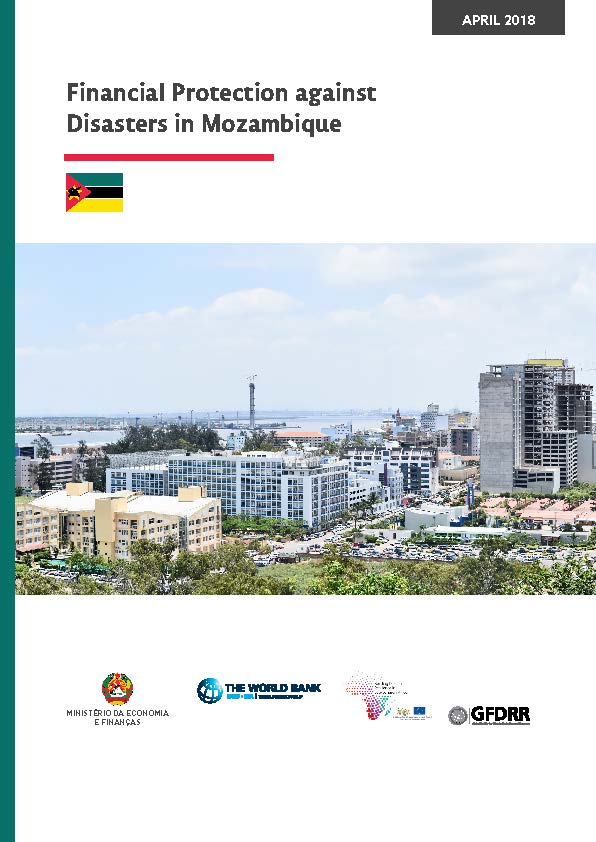 Financial Protection Against Disasters in Mozambique
Financial Protection Against Disasters in MozambiqueThis study is part of a forward-thinking disaster risk management agenda in Mozambique. It explores the country's risk profile and economic impacts of disasters from the past 20 years, reviews the current disaster budgetary process, examines the disaster insurance market, and looks at ways strengthen the State’s response capacity.
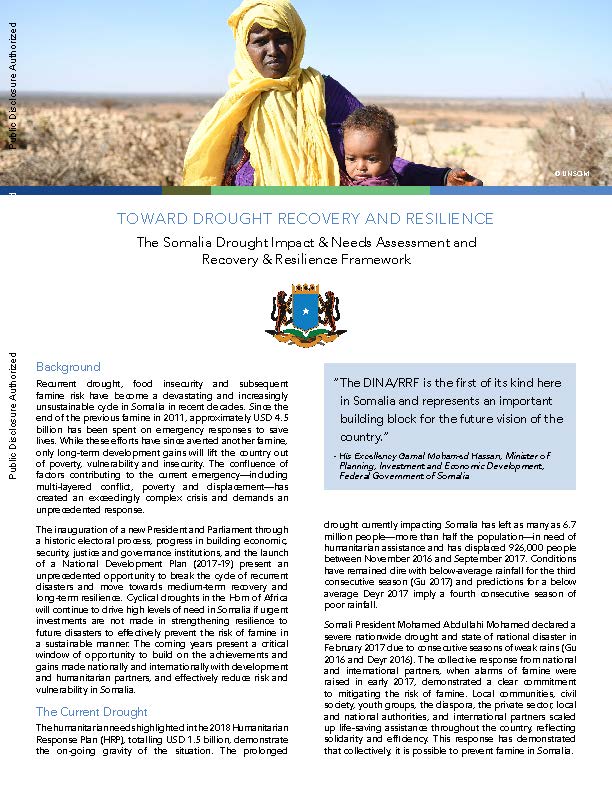 Somalia Drought Impact Needs Assessment (DINA) Executive Brief
Somalia Drought Impact Needs Assessment (DINA) Executive BriefThis document offers a brief overview of the Somalia Drought Impact and Needs Assessment (DINA) and subsequent Resilience and Recovery Framework (RRF), which were requested by the government in August 2017 to identify the root causes of recurrent drought and develop a strategy for medium-term recovery and long-term resilience.
The Somalia DINA synthesis report (Volume I of III) summarizes the full reports that have been submitted for each sector and cross-cutting theme. The full reports can be found in Volume II.
The Somalia DINA sector reports (Volume II of III) provides full, detailed reports for the productive, physical, and social sectors of Somalia, as well as 9 cross-cutting sectors.
The Somalia DINA Federal Member State and Administrative Region Reports (Volume III of III) provides detailed information on drought impacts, recovery needs, and other key findings for Benadir, Galmudug, Hirshabelle, Jubaland, Puntland, Somaliland, and South West State.
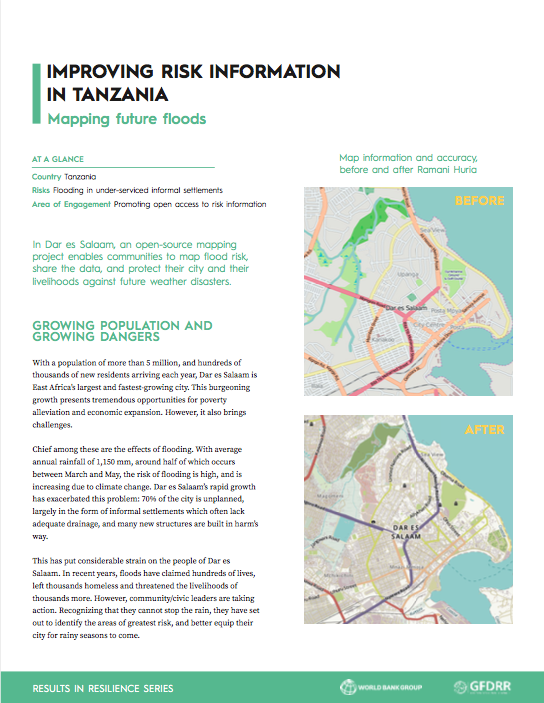 Results: Risk Mapping in Tanzania
Results: Risk Mapping in TanzaniaIn Dar es Salaam, an open-source mapping project enables communities to map ood risk, share the data, and protect their city and their livelihoods against future weather disasters.
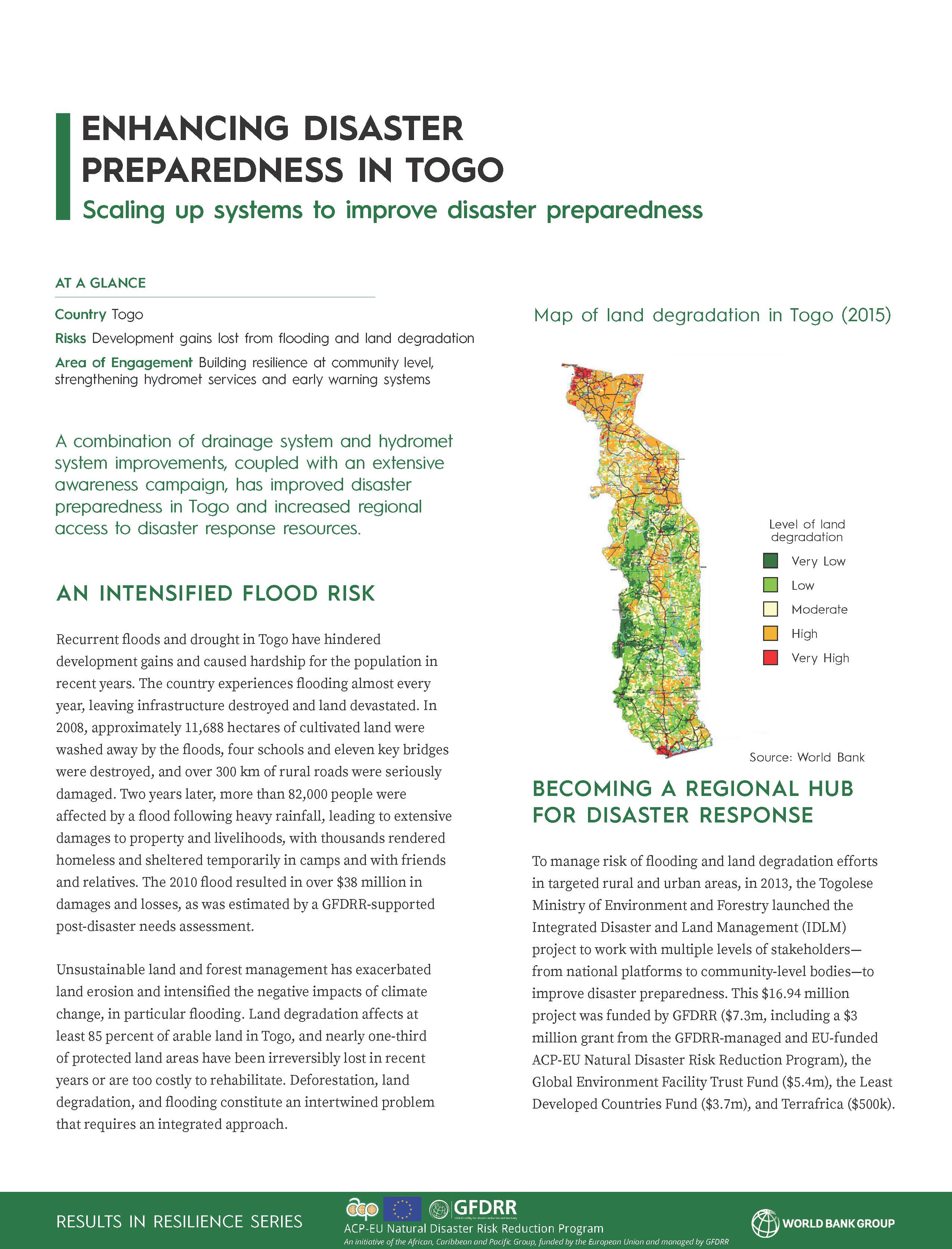 Results: Disaster Preparedness in Togo
Results: Disaster Preparedness in TogoA combination of drainage system and hydromet system improvements, coupled with an extensive awareness campaign, has improved disaster preparedness in Togo and increased regional access to disaster response resources.
Caribbean
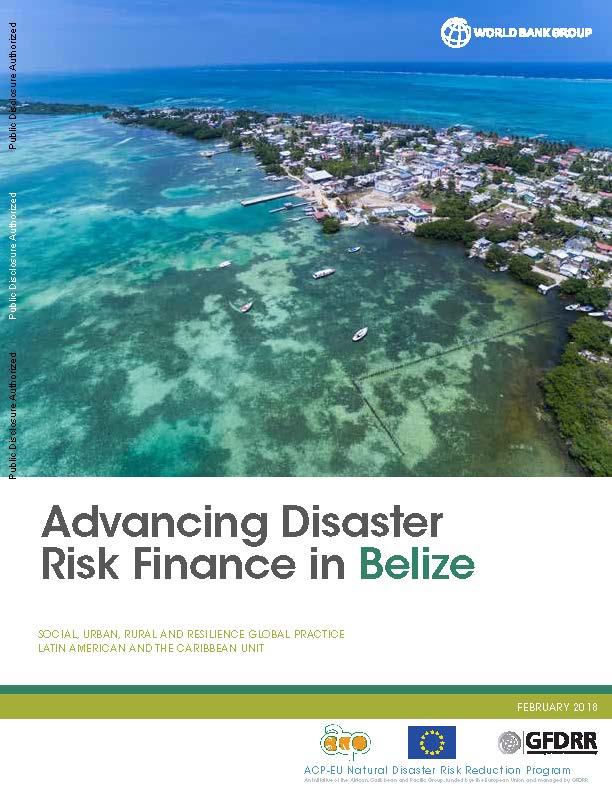 Disaster Risk Financing Strategy: Belize
Disaster Risk Financing Strategy: BelizeThis report presents recommendations for a cost-effective natural disaster risk financing strategy in Belize, drawing heavily on international experience, country-specific information, and similar conditions in highly indebted small island developing states (SIDS)
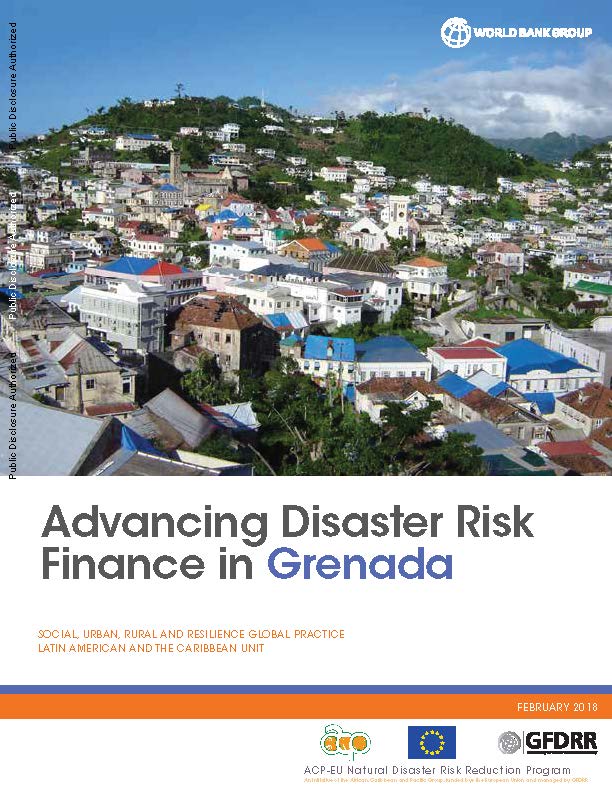 Disaster Risk Financing Strategy: Grenada
Disaster Risk Financing Strategy: GrenadaThis report presents recommendations for a cost-effective natural disaster risk financing strategy in Grenada, drawing heavily on international experience, country-specific information, and similar conditions in highly indebted small island developing states (SIDS)
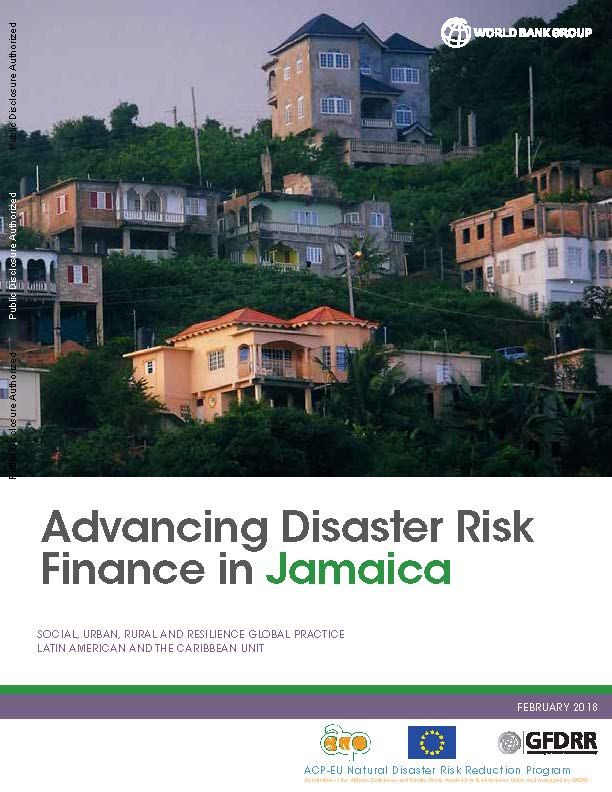 Disaster Risk Financing Strategy: Jamaica
Disaster Risk Financing Strategy: JamaicaThis report presents recommendations for a cost-effective natural disaster risk financing strategy in Jamaica, drawing heavily on international experience, country-specific information, and similar conditions in highly indebted small island developing states (SIDS)
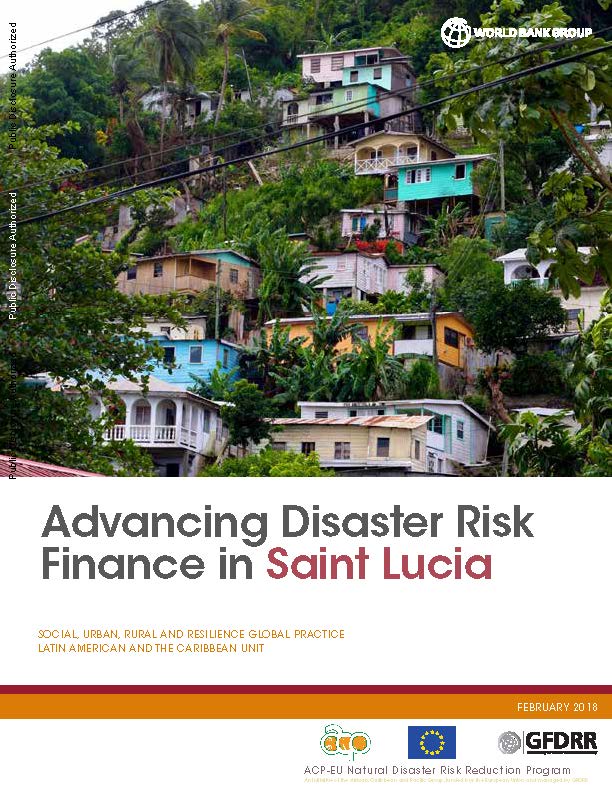 Disaster Risk Financing Strategy: Saint Lucia
Disaster Risk Financing Strategy: Saint LuciaThis report presents recommendations for a cost-effective natural disaster risk financing strategy in Saint Lucia, drawing heavily on international experience, country-specific information, and similar conditions in highly indebted small island developing states (SIDS)
Pacific
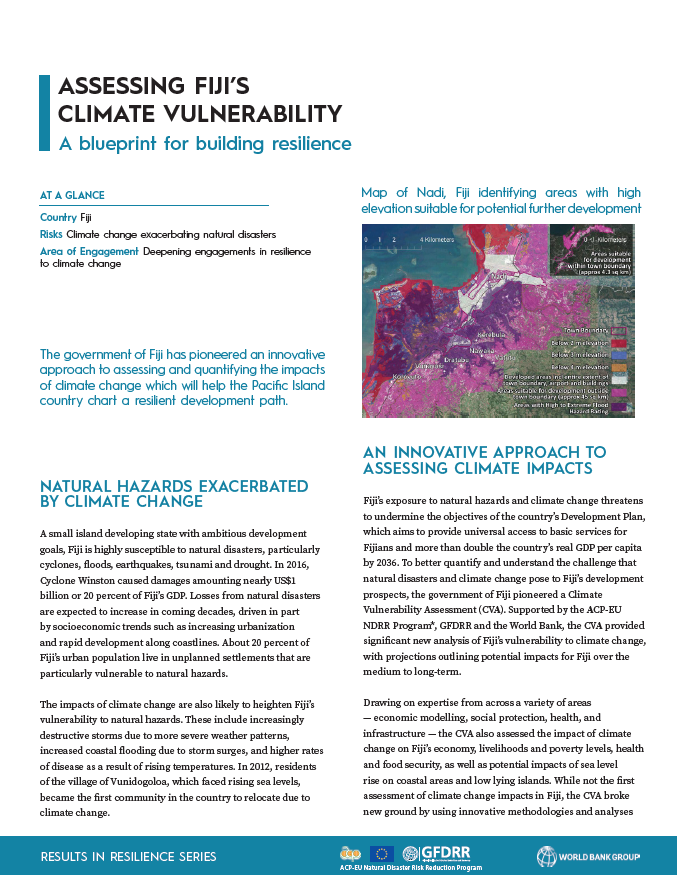 Results: Fiji Climate Vulnerability Assessment
Results: Fiji Climate Vulnerability AssessmentThe government of Fiji has pioneered an innovative approach to assessing and quantifying the impacts of climate change which will help the Pacific Island country chart a resilient development path.
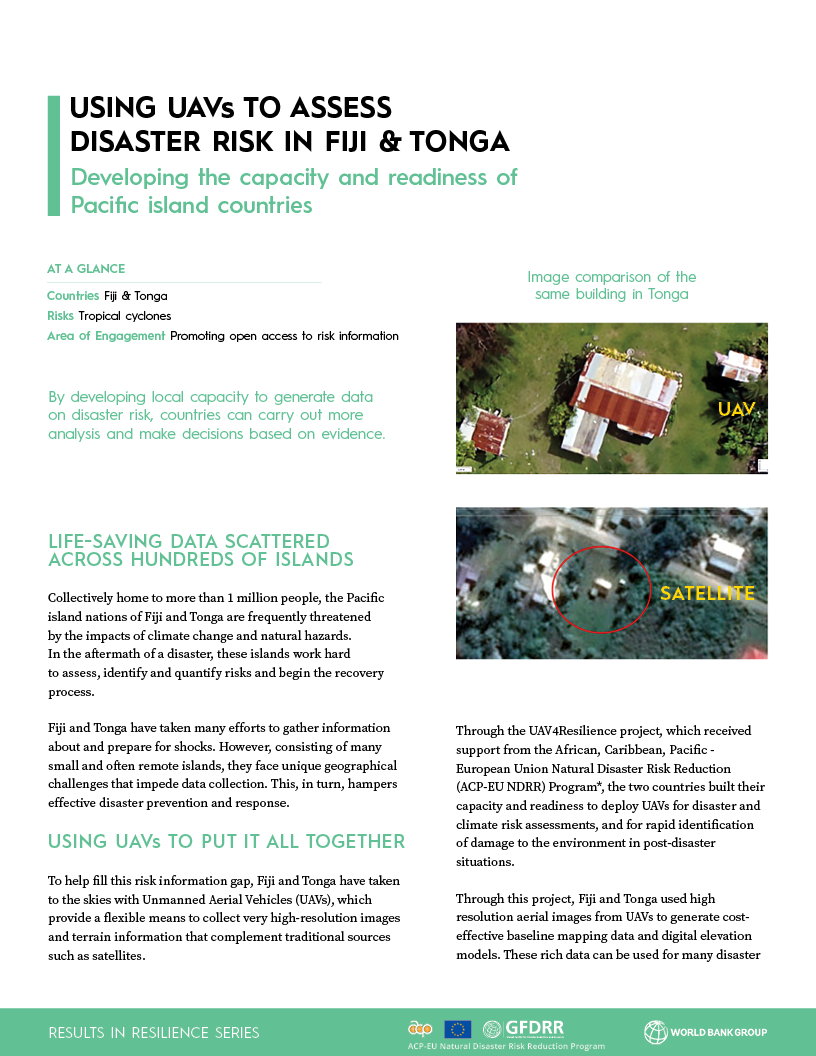 Results: UAVs in Tonga and Fiji
Results: UAVs in Tonga and FijiThrough the use of UAV technology and local capacity building, Fiji and Tonga have been able to generate better data on disaster risk. This, in turn, has enabled them to carry out stronger analysis and make more informed disaster risk management decisions.
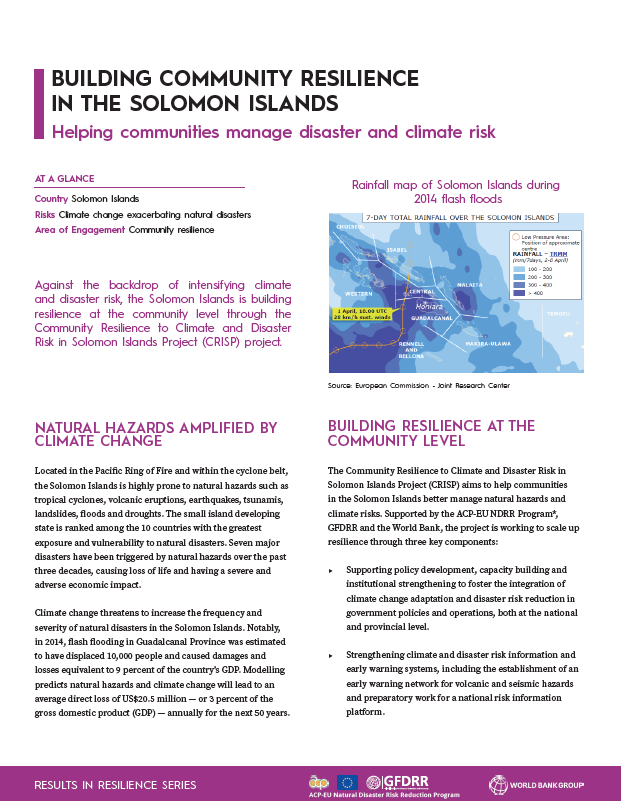 Results: Community Resilience in the Solomon Islands
Results: Community Resilience in the Solomon IslandsAgainst the backdrop of intensifying climate and disaster risk, the Solomon Islands is building resilience at the community level through the Community Resilience to Climate and Disaster Risk in Solomon Islands Project (CRISP) project.
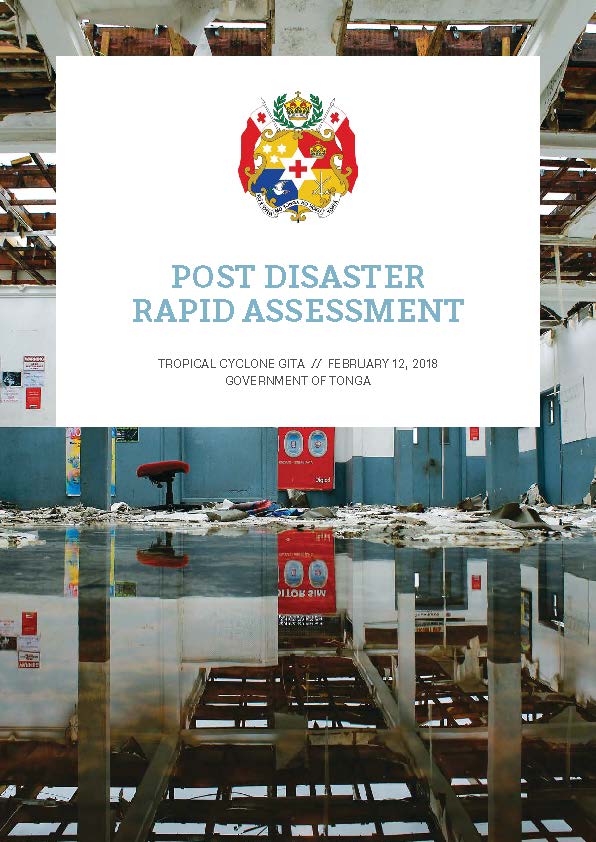 Post-Disaster Rapid Assessment, Tonga (Tropical Cyclone Gita)
Post-Disaster Rapid Assessment, Tonga (Tropical Cyclone Gita)Tropical Cyclone (TC) Gita passed over the Tongatapu and ‘Eua island groups around 11 pm on Monday February 12, 2018. This post-disaster rapid assessment summarizes damages and losses to several different sectors, human and social impacts, and recovery and reconstruction needs. It then discusses a way forward.
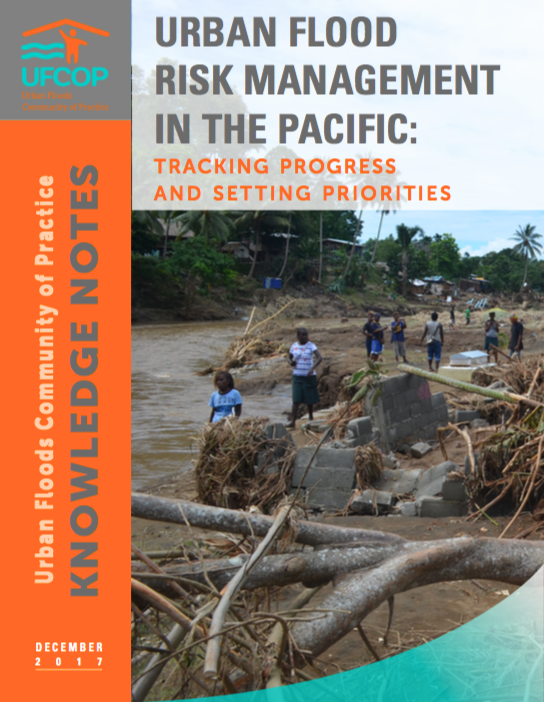 Urban Flood Risk Management in the Pacific
Urban Flood Risk Management in the PacificThis knowledge note examines flood impacts and drivers of flood risk in Pacific Island Countries (PICs), and then describes a benchmarking method developed to track the progress of PICs toward best-practice flood risk management.
This article highlights the process and lessons learned from the Vulnerability Assessment and Climate Resilient Road Strategy of the Samoan road network, and outlines a replicable approach for small island nations with acute capacity challenges that seek to balance analytical rigor with the need for practicality.
Global
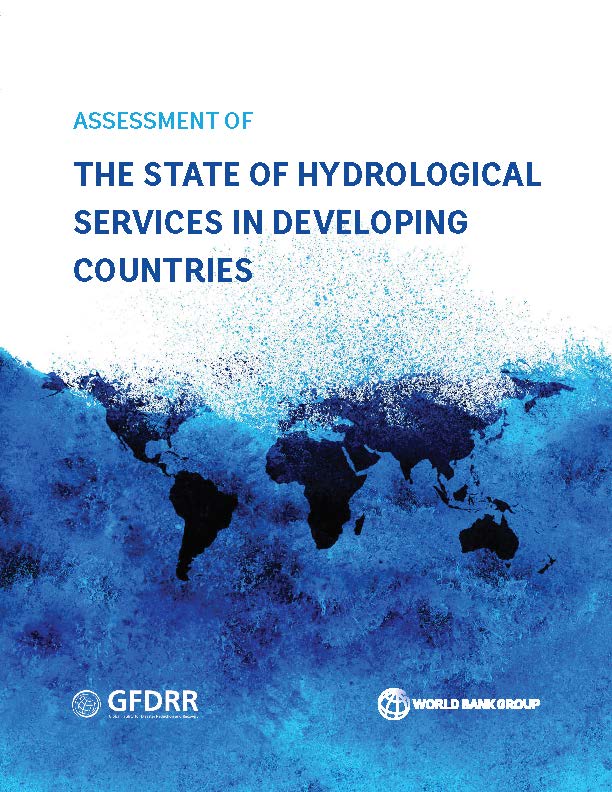 Hydrological Services Assessment
Hydrological Services AssessmentThis report presents an assessment of hydrological services in low- and middle-income countries to better understand their status, performance obstacles, and investment needs. The assessment details institutional constraints consistently present in low- and middle-income countries, and provides recommendations for addressing them.
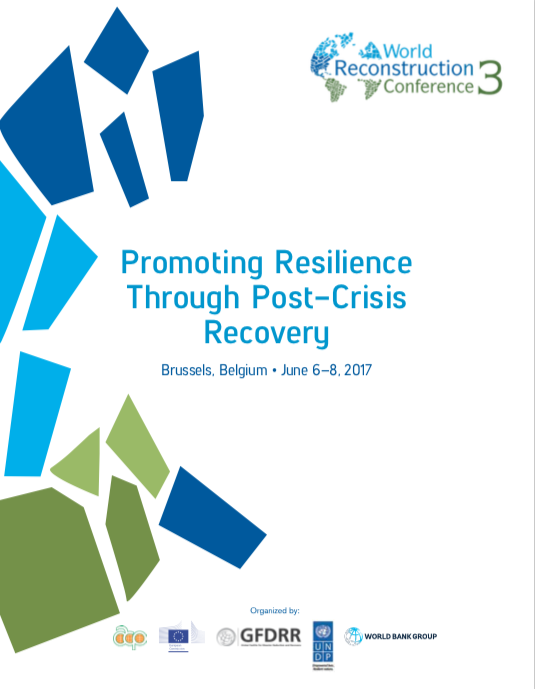 World Reconstruction Conference 3 Proceedings
World Reconstruction Conference 3 ProceedingsThe third Edition of the World Reconstruction Conference (WRC3) focused on “Building back better in recovery, rehabilitation and reconstruction,” Priority 4 of the Sendai Framework for Disaster Risk Reduction. This report offers the opportunity to capture the breadth of knowledge that was shared from June 6–8, 2017, in Brussels, Belgium.
